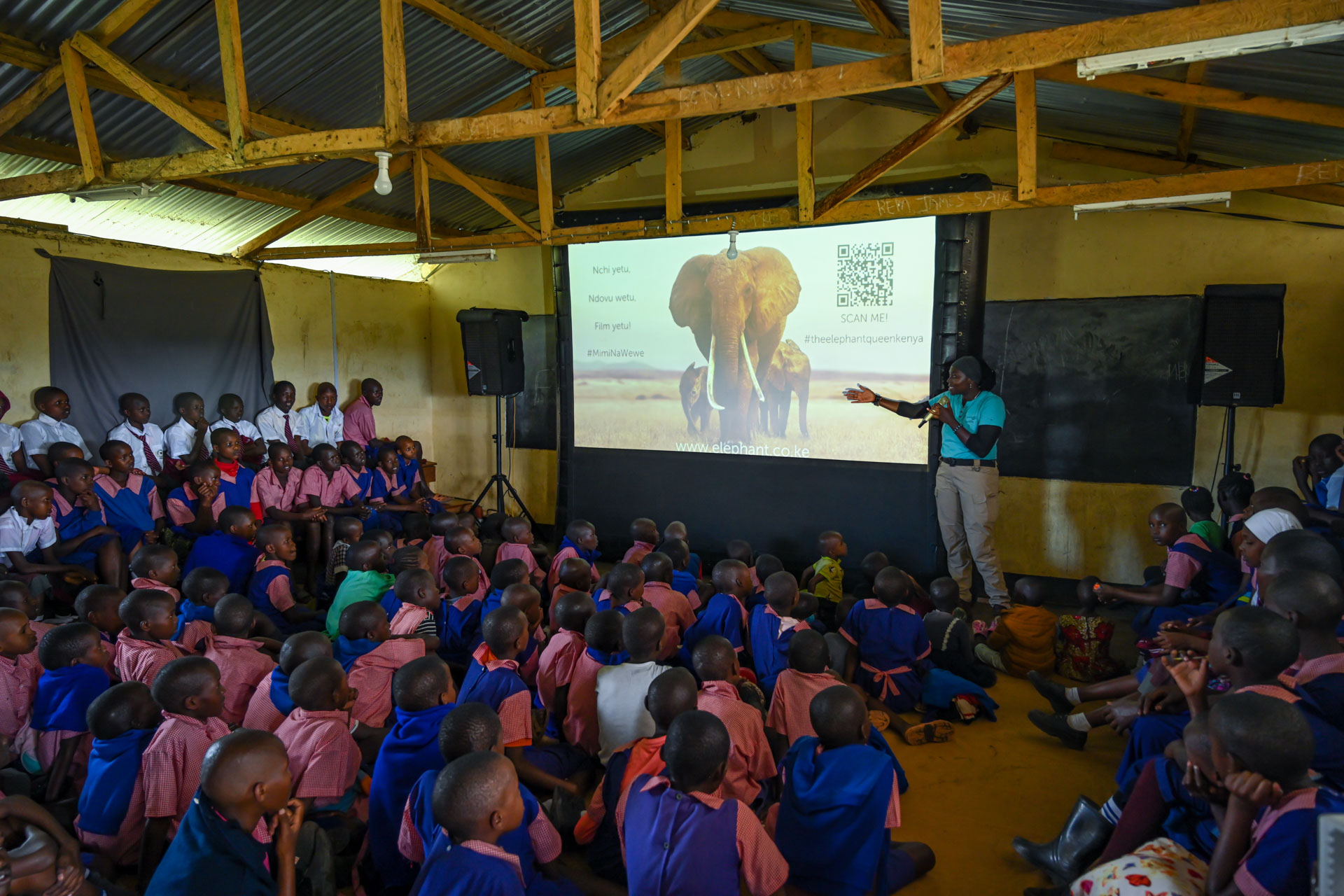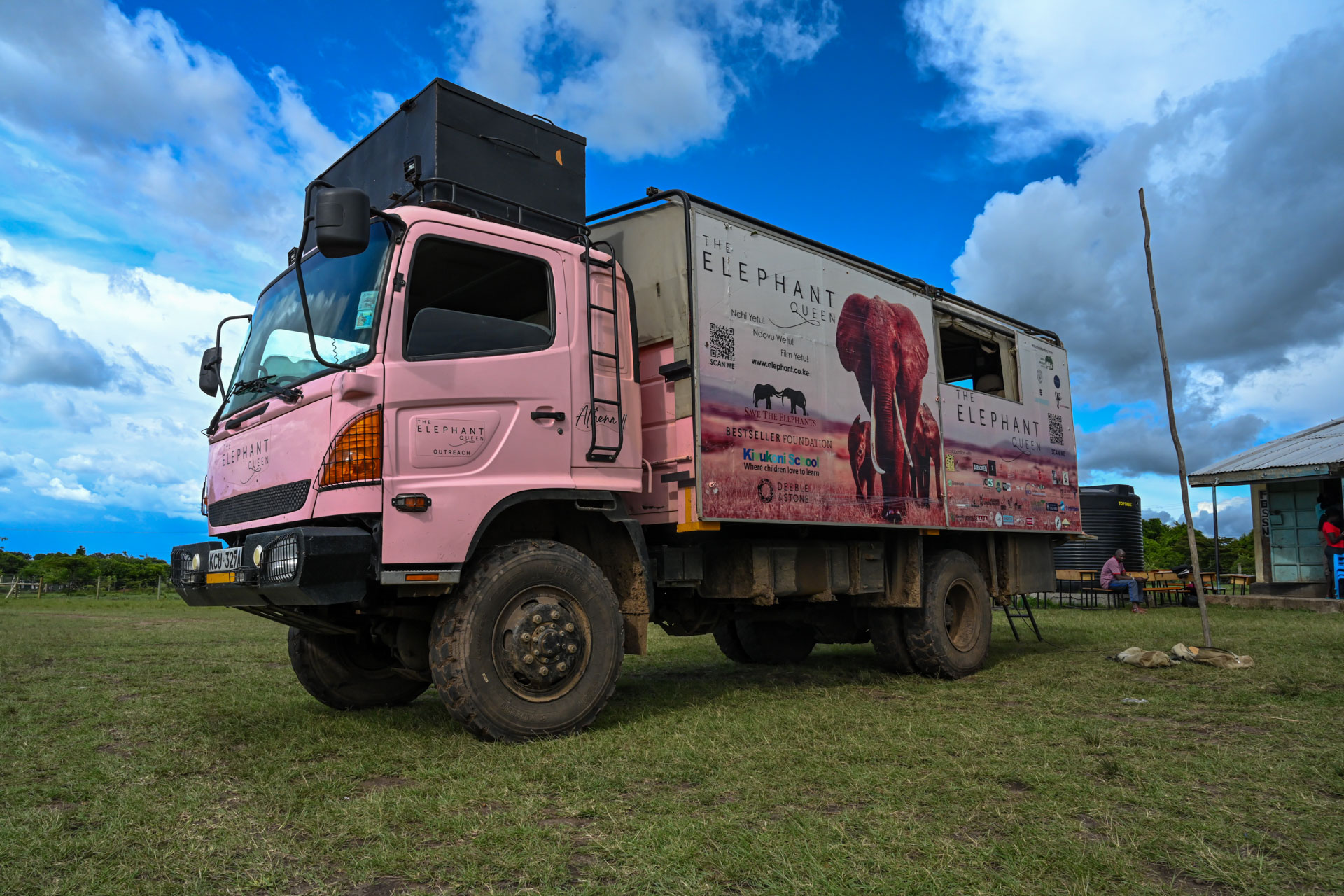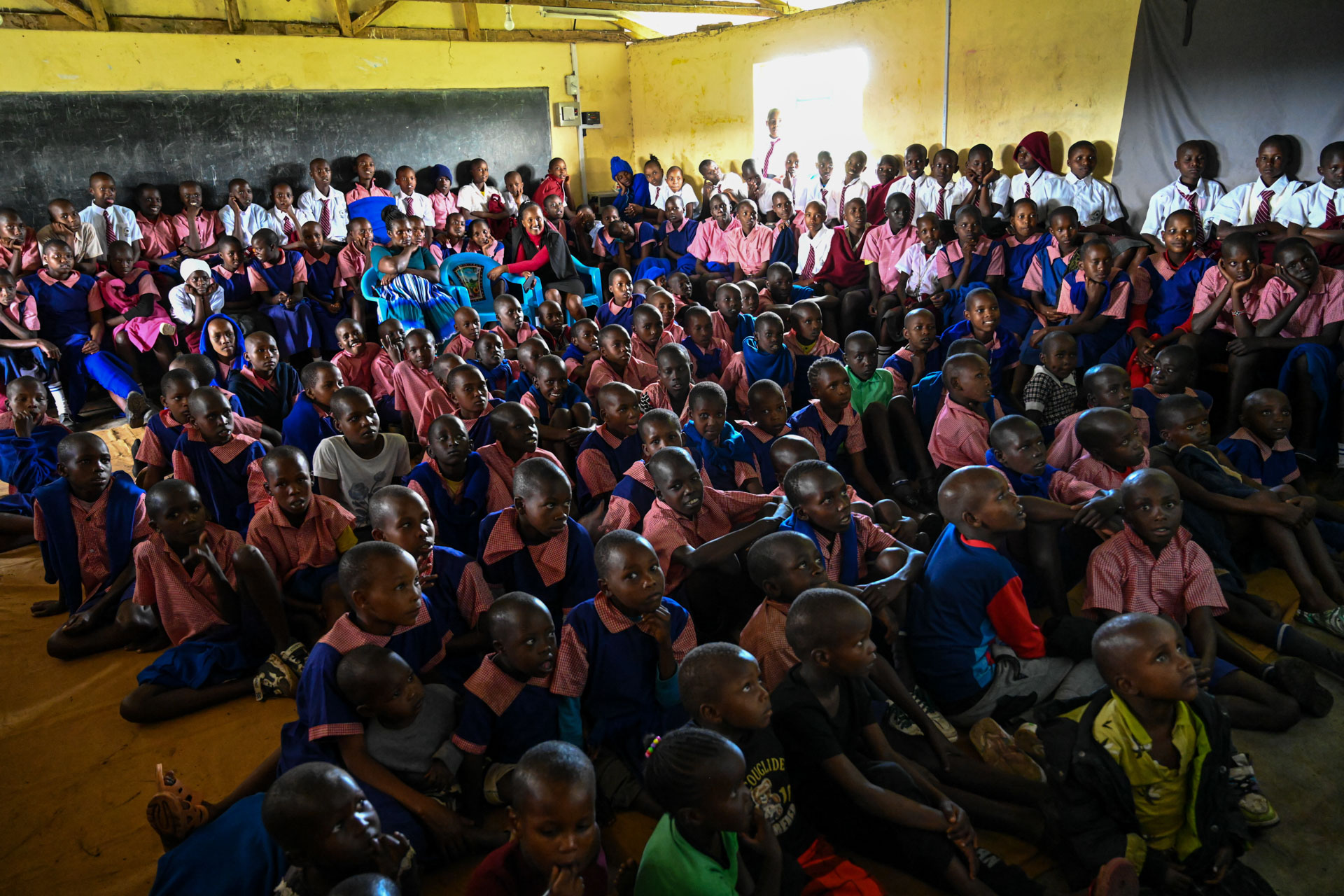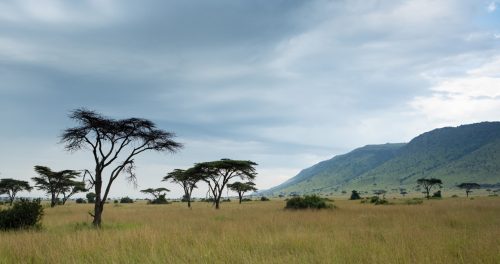
The whole Angama Mara team were all invited to a very special film screening in Angama Mara's Map Room. The movie was The Elephant Queen, a wildlife documentary directed by Victoria Stone and Mark Deebie, released in 2019. It is the story of an elephant matriarch named Athena who leads her herd through a drought in search of water in the Tsavo area of Kenya.
Using stunning cinematography, the film highlights the complex social structures of these intelligent animals while showing the active threats of poaching and habitat loss. The documentary has won several international awards and has been praised for its unique storytelling perspective with a potent message.
After international acclaim, the directors of the movie and organisations involved asked 'what's next'? The one thing that was needed, and arguably the most important, was that communities interacting with elephants on a daily basis had the opportunity to watch the film too.
I got the chance to meet Simatwa who runs the media for The Elephant Queen's mobile cinema. Simatwa has been travelling with a group of creatives for almost two years across Kenya. The campaign is three-fold: screen the documentary at schools and within communities, provide tangible books and literary resources for children and those with no access to internet and lastly, perform an interactive play with actors in costume and have the audience participate.
The Angama Foundation has been delighted to assist The Elephant Queen Outreach Project by facilitating discussions and engaging with the communities in around Angama Mara to arrange screenings of the documentary as the mobile cinema travels across the country. This ties in closely with the Foundation’s commitment to drive conservation education at the surrounding schools, shining a light on the importance of protecting the many elephants that dwell in the area and human-wildlife co-existence.


How do we move forward? One of the biggest issues identified here in the Mara in particular, and in many other parts of Kenya too, is deforestation and the cutting of trees for coal. One of the main messages that conservation organisations in Kenya is keen to communicate is that if you take care of the land first, then the animal will follow.
The Angama Foundation has worked with nearby schools to start tree nurseries that can be taken home and planted there too. Another critical component to wildlife conservation is connecting wild places. Reserves and conservancies can act as unnatural islands with urban areas blocking the animals from migrating along routes that they have used for generations. Creating wildlife corridors connecting these spaces is an important conservation effort ongoing in Kenya. For us, the most notable is the pinch point in Amboseli which you can read more about here.
Filed under: Stories From The Mara
Subscribe for Weekly Stories
Comments (0):

Angama Safari Camp